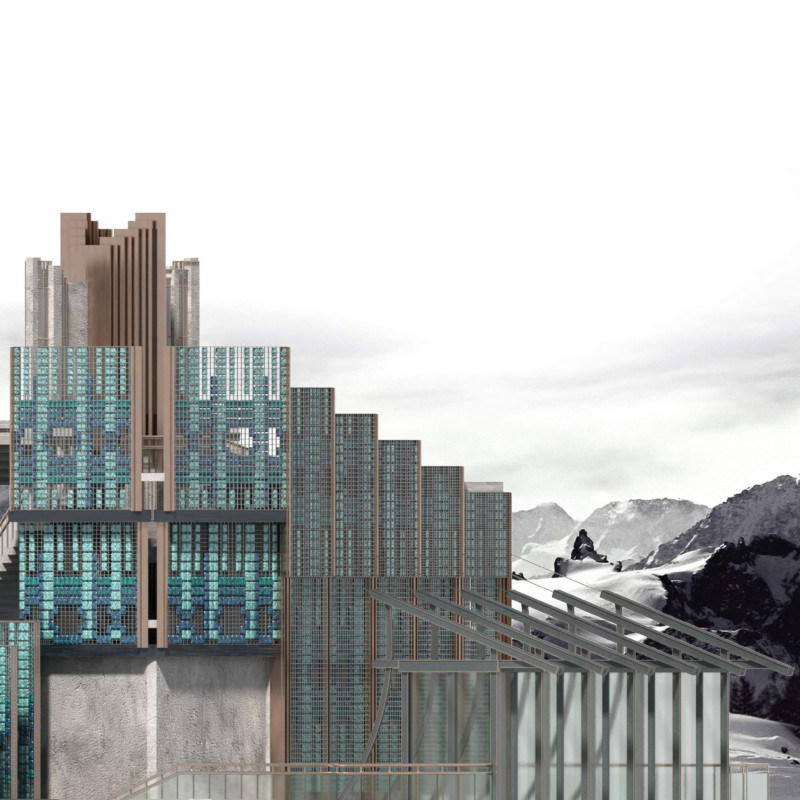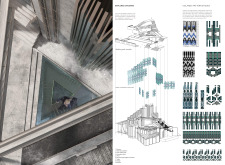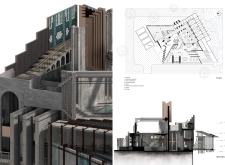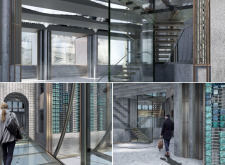5 key facts about this project
The architecture of the Cairns Stone Museum embodies a commitment to sustainability and local context. By utilizing materials that resonate with the characteristics of the surrounding geology, the design achieves a harmonious balance with nature. Concrete, glass, steel, stone, and timber have been employed to create a facade that mirrors the stark yet beautiful elements of Iceland’s landscape. Each material is chosen not only for its aesthetic and structural properties but also for its ability to convey the geological narrative that the museum aims to tell.
The layout of the museum is crafted with the visitor experience in mind. Various exhibition spaces are arranged to flow organically, allowing patrons to navigate through the displays without feeling confined or rushed. Observation platforms are strategically placed to offer uninterrupted views of the breathtaking scenery, encouraging visitors to pause and reflect on their surroundings. This design fosters an environment of discovery where learning about geology becomes an intrinsic part of the experience.
Unique design approaches are evident throughout the project. The use of large glass panels allows natural light to flood interior spaces, creating an inviting atmosphere while establishing a connection between the inside and outside environments. This transparency is essential, as it serves to integrate the museum with its geological context, reinforcing the theme of harmony between architecture and nature. Furthermore, the staggered heights and angular forms of the structure respond to the irregular topography of the site, respecting and enhancing the natural landscape rather than competing with it.
The museum’s internal layout includes several key areas: a welcoming entry point, an information desk, expansive exhibition areas, and communal spaces including a café. Each of these components contributes significantly to the overall function of the museum, providing both educational resources and spaces for rest and reflection. The design also incorporates back-of-house facilities, ensuring that the operational aspects of the museum are discreetly managed without detracting from the visitor experience.
In addition to its educational mission, the Cairns Stone Museum acts as a conduit for community engagement, offering programs and activities that foster a deeper appreciation for Iceland’s unique geological features. The architecture of the building plays a critical role in this by being an open and accessible space where learning happens naturally, encouraging curiosity and involvement from a diverse audience.
In summary, the Cairns Stone Museum is characterized by an architectural design that is both functional and contextually responsive. The careful consideration of materiality, spatial arrangement, and visitor experience demonstrates a sophisticated understanding of how architecture can embody and reflect its environment. For those interested in delving deeper into this project, exploring the architectural plans, sections, designs, and ideas will unveil the meticulous thought that has gone into creating this unique space.


























